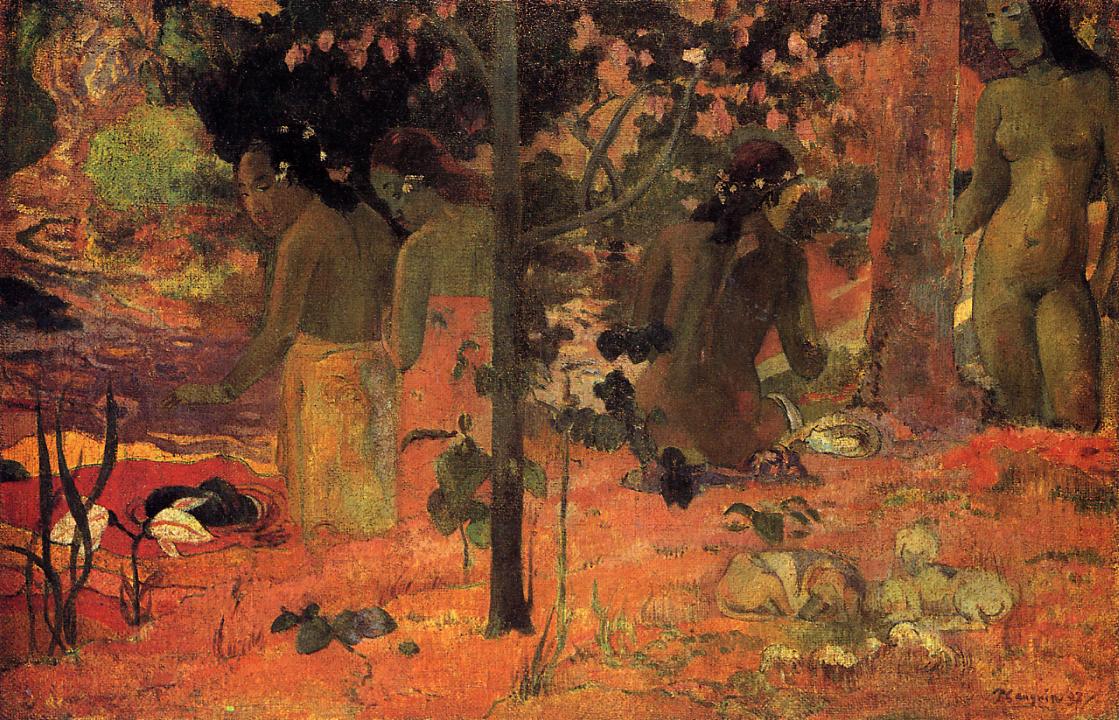Гоген Поль - Купальщицы 1897
 |
 |
 |
 |
 |
 |
 |

Купальщицы 1897
60x93см холст/масло
National Gallery of Art, Washington, DC, USA
The image is only being used for informational and educational purposes
<< Previous G a l l e r y Next >>
From National Gallery of Art, Washington:
Like Te Pape Nave Nave, this work was painted after Gauguin's return to Tahiti from Paris. Notice how the colors of these later pictures are nuanced, more blended than the flatter, more intense hues found in the two earlier ones. He has still outlined many of his shapes, yet they nonetheless appear softer, and the large areas of colors are neither so bold nor so distinct. Here, especially, the coarse texture and heavy weave of the canvas add a tapestrylike effect. Whereas the earlier works from Tahiti are vivid and direct, those painted during this second trip have a more dreamlike appearance and spiritual intensity. The figures are more monumental, with an aura of timelessness and dignity. And their color is more expressive.
Gauguin had always been preoccupied with the role of color, calling it a "profound and mysterious language, a language of the dream." He described its effects as akin to music and its relationships to musical harmonies. The gentle tones here—the soft mat of pinks that carpets the foreground, the swirls of lavender water—seem to be scented with the sweet perfumes of paradise. This is one of the most sumptuous of all Gauguin's paintings. The Bathers probably once belonged to Edgar Degas, who owned several works by Gauguin.